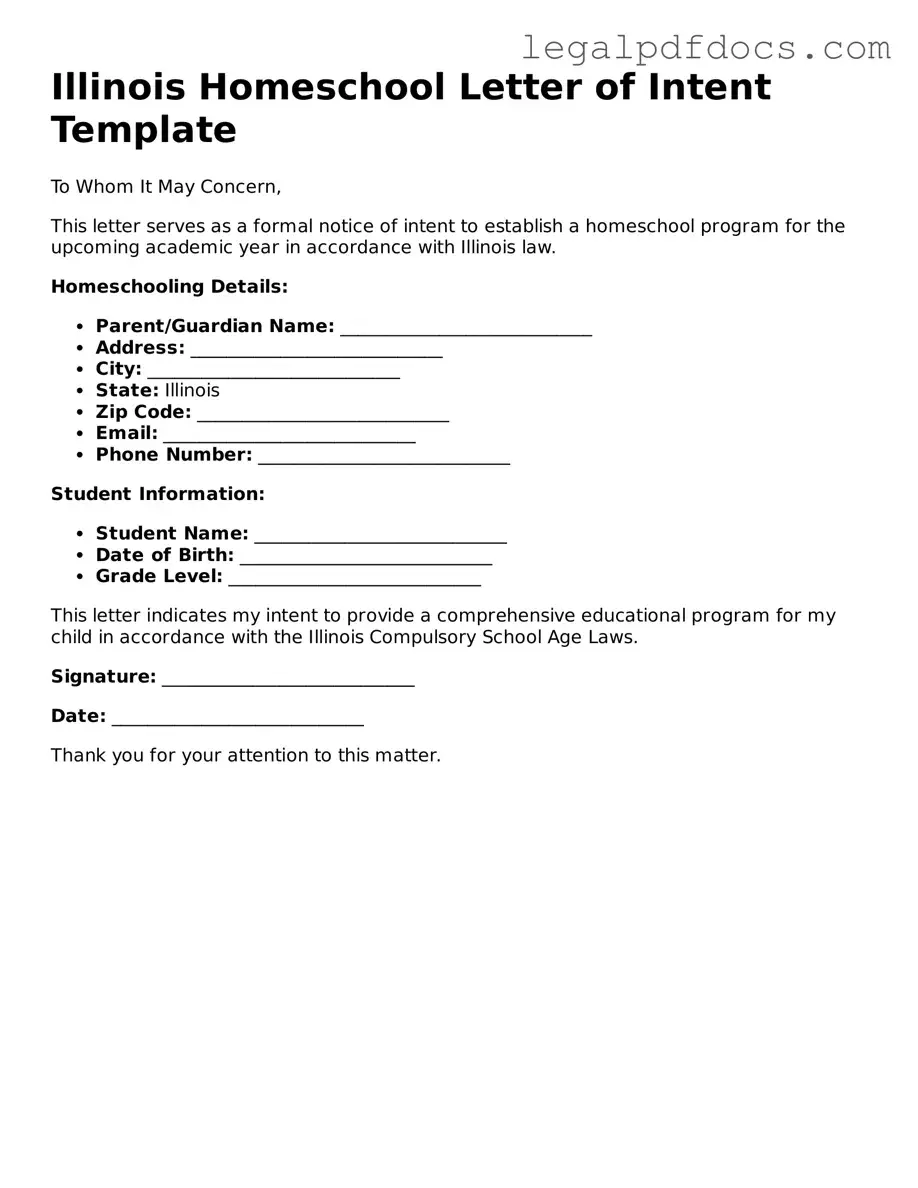Official Homeschool Letter of Intent Form for Illinois
The Illinois Homeschool Letter of Intent is a crucial document that parents must submit to formally notify their local school district of their intention to homeschool their children. This form serves as a foundational step in establishing a home education program, ensuring compliance with state regulations. For those ready to embark on this educational journey, filling out the form is essential; click the button below to get started.
Open Homeschool Letter of Intent Editor Here
